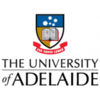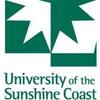Solving Cordelia’s Dilemma: threshold concepts within a punctuated model of learning
| Title | Solving Cordelia’s Dilemma: threshold concepts within a punctuated model of learning |
| Publication Type | Journal Article |
| Year of Publication | 2010 |
| Authors | Kinchin I.M. |
| Journal | Journal of Biological Education |
| Volume | 44 |
| Issue | 2 |
| Start Page | 53-57 |
| Keywords | Concept mapping, Dynamic transformation, Evolution, Knowledge structures, sustainable learning, transformative learning |
Aim/objectives:
To offer a theoretical framework of threshold concepts in transformative learning within the context of biology education
Geographic Focus:
Methods:
Key Findings:
The article proposes threshold concepts as a mechanism to understand periods of stasis (i.e. “failure to learn”), punctuated by phases of rapid conceptual transformation. The theory posits that threshold concepts are points at which varying forms of knowledge (e.g. compartmentalised/linear versus holistic/hierarchical1) are integrated, leading to transformative learning. Periods of stasis, or apparent lack of learning, are viewed as normal and necessary (even desirable). Rather than stagnation or “non-learning”, stasis is viewed as a period when “raw materials” are assembled to facilitate future change. Stasis is, then, a prerequisite to learning. Threshold concepts must be crossed before the learner can progress to a transformed way of understanding, interpreting or viewing. Threshold concepts have general characteristics that stand out against other concepts within a particular discipline. These characteristics are identified as: (i) transformative, at the level of values and attitudes; (ii) irreversible, or unlikely to be forgotten; (iii) integrative, exposing conceptual interrelations; (iv) bounded, helping to define disciplinary areas; and (v) troublesome, tending to challenge previous views or values. “Non-learning” scenarios are identified when no attempt is made to integrate knowledges viewed as critical to the discipline.
Lessons:
Threshold concepts are interesting to adaptive learning, in that they may help to shed light on “learning paradoxes” identified in other disciplines, such as environmental resource management for example. A learning paradox occurs when an increase in information or knowledge does not reflect a corresponding increase in learning (identified by changes in behaviours or attitudes). According to the punctuated model of conceptual change, this suggests that: (i) a period of stasis exists, where “raw materials” are being assembled but threshold concepts have not yet been crossed; or (ii) there is a breakdown in attempts to adequately integrate the appropriate knowledges necessary to reach threshold points. Caution is needed when extrapolating a theory developed for individual learning within a specific discipline, and attempting to apply this to collective learning in a multi-disciplinary domain. Nevertheless, it does provide insights that may be beneficial for analysis. There may, however, be a need for caution in regard to the theory itself. The supposition is that “macro level thresholds” must be crossed before the individual (or collective) can transition to a “higher education.” This begs the question as to who defines these thresholds, and how do established threshold concepts receive ongoing critical reflection (i.e. the possibility must exist that primary concepts themselves may limit learning). Threshold concepts also infer that particular knowledge is “mainstreamed” or viewed as more important, therefore deserving greater emphasis and focus than other knowledge or propositions. It may also encourage ‘specialists’ or ‘experts’ to become central to educational enquiry and discourse.









